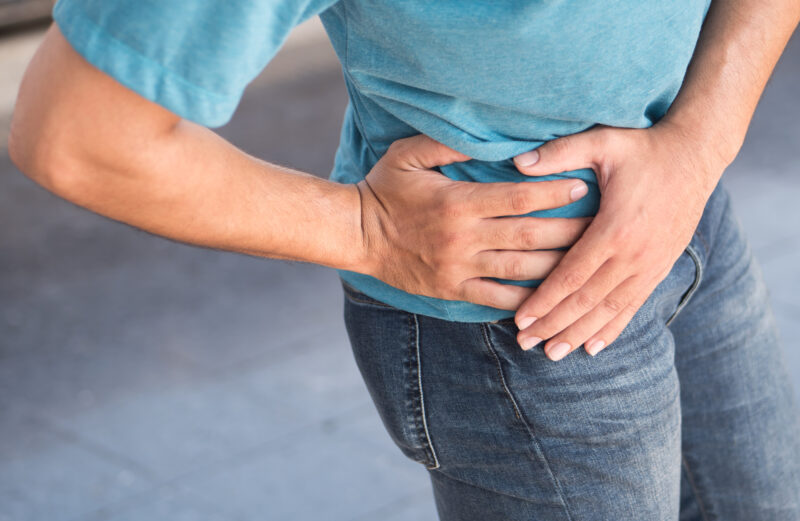
Pain in the outer hip can prevent you from participating in the activities you know and love. In fact, even walking can quickly become irritating and painful.
However, this type of pain can arise due to various potential causes, like muscle tears, tendinitis, arthritis, or bursitis. In other words, it can be hard to pinpoint exactly what is going on beneath the surface.
Yet, with the help of a physiotherapist, you can uncover the underlying cause of the pain you are experiencing and, thus, receive effective treatment. So, in this article, we’ll explore hip bursitis, what it is, and what effective treatment and prevention entail. Are you experiencing hip bursitis? Here’s everything you should know.
What Is Bursitis?
Bursa are small fluid-filled sacs located near the tendons of the larger joints in the body, such as the knees, shoulders, and hips. These sacs work to reduce friction in these areas, acting as a cushion and gliding surface. However, as you might already guess, overuse and repetitive actions can quickly lead to inflammation of a bursa.
When this occurs at the hip joint, you may experience pain while walking, running, or standing for long durations. So, outside of repetitive actions and overuse, what else may increase your odds of experiencing hip bursitis?
Well, you may be at a higher risk of developing inflammation in the hip bursa if you have other conditions that affect your walking gait, such as scoliosis, poor posture, differences in leg length or strength, and previous hip surgery. Other contributing factors include a history of rheumatoid arthritis, bone spurs, or excess body weight, putting stress on the joint.
Either way, a physiotherapist can help guide you toward decreased pain and improved function (more on this below).
What Are the Symptoms of Hip Bursitis?
Trochanteric bursitis, in particular, causes pain in the outer hip. It can manifest as a dull ache or sharp pain but is always located where the outer hip meets the thigh.
Indications that the hip pain you are feeling may be bursitis include:
- Increased pain after periods of inactivity like sleeping or sitting for a long time
- Increased pain when you apply direct pressure on the area by laying on the affected side or touching the outer hip
- Pain that spreads down the outside of the thigh or refers to adjacent areas like the lower back, inner thigh, or glute.
- Pain that worsens with repetitive movements such as climbing the stairs
The good news is that with proper time and attention, hip bursitis is treatable.
How Is Hip Bursitis Treated?
The primary treatment methods for hip bursitis often involve decreasing inflammation and temporarily ceasing any activity that aggravates the pain.
To decrease the inflammation of the bursa, applying ice or taking anti-inflammatory drugs, like Aspirin or Nurofen, will bring down any swelling and relieve the associated pain. If you prefer not to take Aspirin, a topical anti-inflammatory or simply using ice may provide some immediate relief.
Initial activity modifications that may further help alleviate associated bursitis pain include:
- Temporarily ceasing any repetitive activities or sports.
- Avoiding extended periods of standing.
- Using mobility-assisting devices like a cane or crutches to take the weight off of the hip.
If your bursitis does not respond to the therapies above, your doctor may suggest a steroid injection or a minor procedure to drain the bursa sac and decrease swelling. At the same time, physiotherapy can be an all-natural option to combat your pain and get back to your regular activities.
How Can I Prevent and Recover from Hip Bursitis?
Working with a physiotherapist and our exercise physiologist is one of the best ways to treat and prevent the reoccurrence of bursitis. Strengthening and stretching the muscles around the hip will decrease the stress on the bursa and remove mobility limitations that may be affecting your posture or walking gait.
Your physiotherapist will also perform a thorough assessment, determining strategies and exercises that are beneficial for you and your specific situation. They will also use other modalities, such as manual techniques, dry needling, shockwave, massage, and more, to help alleviate your symptoms and promote healing.
To safeguard against bursitis as you return to regular activity, it’s also always a good idea to ease slowly into new activities, particularly those requiring repetitive hip movement. Avoiding laying on one side too long may also protect the bursa; with that in mind, you may want to reconsider your sleeping position if you wake up with increased pain.
Still unsure what to do about your outer hip pain? With Turramurra Sports & Spinal Physiotherapy, our team is ready to help you avoid and overcome pain or injury.
Whether you’re experiencing hip pain or any other musculoskeletal discomforts, with us, you can rest assured you’re in safe hands. Together, we can get you back to your normal. Book your appointment with us today!











